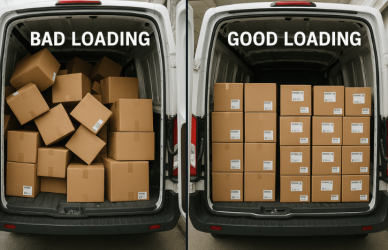Team driving, where two truckers take turns driving a single truck on long hauls, has become increasingly popular in the trucking industry. While it can offer several benefits, it also comes with its own set of challenges. In this blog post, we will discuss the pros and cons of team driving so that you can make an informed decision on whether or not team driving is right for you.
Pros:
- Increased earning potential: With team driving, truckers can cover more miles in less time, which means more pay. As two drivers share the driving responsibilities, they can complete the delivery faster than a solo driver.
- Improved safety: Long-haul driving can be physically and mentally exhausting, and fatigue is a significant risk factor for accidents. With team driving, the drivers can take turns resting, ensuring that there is always a fresh and alert driver behind the wheel.
- Enhanced job satisfaction: Team driving offers an opportunity to work with a partner, which can make the job more enjoyable and less lonely. Truckers can share the workload and support each other during long hours on the road.
- Flexibility: With two drivers, there is more flexibility to adjust schedules to meet delivery deadlines or to take unexpected detours. If one driver needs to rest or deal with a personal matter, the other driver can keep the truck moving.
Cons:
- Sharing close quarters: Team driving requires two people to share the same truck for days or even weeks at a time. Personalities can clash, and the close quarters can lead to tensions and conflicts.
- Communication difficulties: Communication is essential for team driving to work effectively. The drivers need to communicate about driving schedules, rest breaks, and delivery times. However, communication can be challenging, especially if the drivers have different communication styles or languages.
- Unequal workload: It is not uncommon for one driver to end up doing more driving than the other, which can lead to resentment and conflict.
- Split pay: Team driving often comes with a split pay arrangement, which can be a source of conflict if one driver feels that they are doing more work than the other.
In addition to the pros and cons mentioned above, it’s important to highlight the unique dangers that women may face as team drivers. Unfortunately, the trucking industry is still male-dominated, and women may face harassment or discrimination on the road or at truck stops. This can be especially concerning for women who are sharing close quarters with a male partner.
It’s important for women team drivers to take extra precautions, such as sharing their location with family or friends, being aware of their surroundings, and reporting any incidents of harassment or discrimination. Trucking companies can also take steps to ensure the safety of their female employees by providing training on safety and harassment prevention and implementing policies and procedures to address these issues.
While team driving can be a lucrative and rewarding career for women, it’s crucial to recognize and address the unique challenges and risks that they may face on the road. If you’re a woman considering team driving, be sure to thoroughly research any potential companies you might like to work with to ensure they are thoroughly vetting anyone who you may end up in the cab with.
Team driving can be a beneficial and rewarding experience as long as both drivers are aware of the risks and opportunities. As with any journey, there will be bumps in the road but being part of a team provides a sense of security that’s difficult to replicate on solo drives. As technology continues to advance, expect more ways to make the ride smoother for teams, particularly when it comes to managing navigation duties and scheduling stops along the way. Overall, driving as part of a team has some clear advantages: sharing the workload while also gaining support from another driver through all stages of the trip. If you’re lucky enough to find someone compatible to share your long journeys with, you may just find yourself looking forward to hitting the open road.








